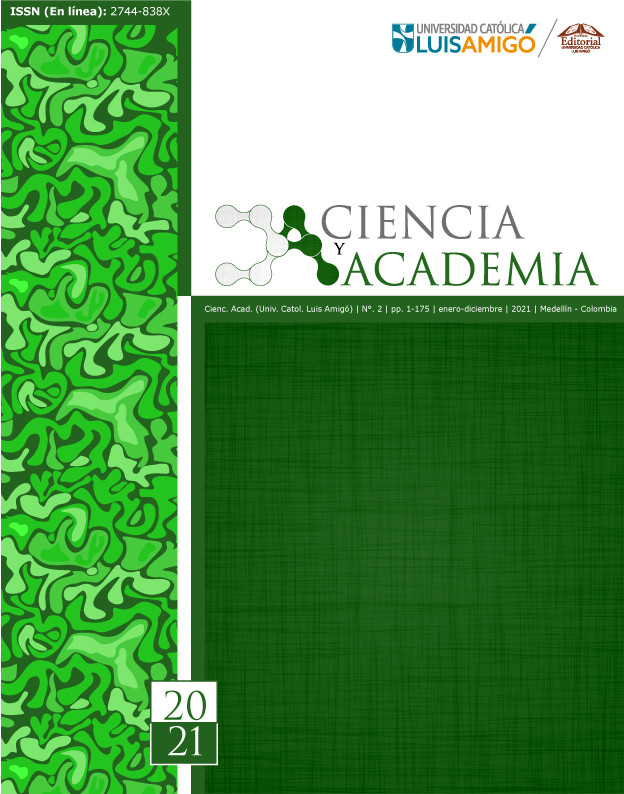Love in the teacher-student relationship and its influence as a possible protective factor in the mental health of the teacher
DOI:
https://doi.org/10.21501/2744838X.4265Keywords:
Mental health, Burnout, Education, Pedagogy, Teacher, Protective factorsAbstract
In this paper aims to justify how love in the teacher-student relationship can be a factor of protection of the mental health of the teacher, for this, a series of arguments
are presented in which the importance of the said study is evidenced, it is based on identifying the characteristics and qualities that a teacher must have, which many of them have been inherited and assumed almost automatically by those who have seen in the teaching profession their life project. After this profile of the teacher, a series of socio-emotional and psychological risks of the teaching function is presented, in this section, a special mention is made of how teachers have assumed their role in the face of the pandemic generated by COVID-19 and the emotional implications that this health situation has generated in them. In the following sections of this paper, the concept of Love is developed from the theoretical perspective of Paulo
Freire, which must be the theoretical proposal that will guide this doctoral research project and some of the possible factors of protection of mental health associated
with the teaching profession are presented, finally, some conclusions are presented in which the clues that can allow relating the love towards the teacher, to their practices and their relationship with the students and the influence of these on the mental health of the teacher are enunciated.
Downloads
References
Arís Redó, N. (2009). El síndrome de burnout en los docentes. Electronic Journal of Research in Educational Psychology, 7(2), 829-848.
Castillo, S. (2001). Síndrome de burnout o síndrome de agotamiento profesional. Medicina Legal de Costa Rica, 17(2), 11-14.
Cea, F., García Hormazábal, R., Turra, H., Moya, B., Sanhueza, S, Moya, R., & Vidal, W. (2020, 8 de junio). Educación online de emergencia: hablando a pantallas en negro. CIPER. https://www.ciperchile.cl/2020/06/08/educacion-online-deemergencia-
hablando-a-pantallas-en-negro/
Claro, S., & Bedregal, P. (2003). Aproximación al estado de salud mental del profesorado en 12 escuelas de Puente Alto, Santiago, Chile. Revista Médica de Chile, 131(2), 159-167. http://dx.doi.org/10.4067/S0034-98872003000200005
Durán Durán, M. A., Extremera Pacheco, N., Rey Peña, L. (2001). Burnout en profesionales de la enseñanza: un estudio en educación primaria, secundaria y superior. Revista de Psicología del Trabajo y las Organizaciones, 17(1), 45-62.
Freire, P. (2007). La educación como práctica de la libertad. Siglo XXI Editores.
Freire, P. (2010). Cartas a quien pretende enseñar. Siglo XXI Editores.
Freire, P. (2012). Pedagogía de la autonomía: saberes necesarios para la práctica educativa. Siglo XXI Editores.
Gantiva Díaz, C., Jaimes Tabares, S., & Villa Orozco, M. (2010). Síndrome de burnout y estrategias de Afrontamiento en docentes de primaria y bachillerato. Psicología desde el Caribe, (26), 36-50.
Guic, E., Bilbao, M. A., & Bertín, C. (2002). Estrés laboral y salud en una muestra de ejecutivos chilenos. Revista Médica de Chile, 130(10), 1101-1112. http://dx.doi.org/10.4067/S0034-98872002001000004
Quiceno, J. M., & Vinaccia Alpi, S. (2007). Burnout: síndrome de quemarse en el trabajo (sqt). Acta Colombiana de Psicología, 10(2), 117-125.
Sepúlveda, P. (2021, 25 de abril). “No doy más”; “Mi vida es estar sentada frente al computador”; “Me tienen colapsada”: El agobio de los profesores con las clases on-line, que admiten más agotadoras que las presenciales. La tercera. https://bit.ly/3tcUFZy
Published
How to Cite
Issue
Section
License
Copyright (c) 2022 Ciencia y Academia

This work is licensed under a Creative Commons Attribution-NoDerivatives 4.0 International License.
La revista y los textos individuales que en esta se divulgan están protegidos por las leyes de copyright y por los términos y condiciones de la Licencia Creative Commons Atribución-No Comercial- 4.0 Internacional. Permisos que vayan más allá de lo cubierto por esta licencia pueden encontrarse en http://www.funlam.edu.co/modules/fondoeditorial/






